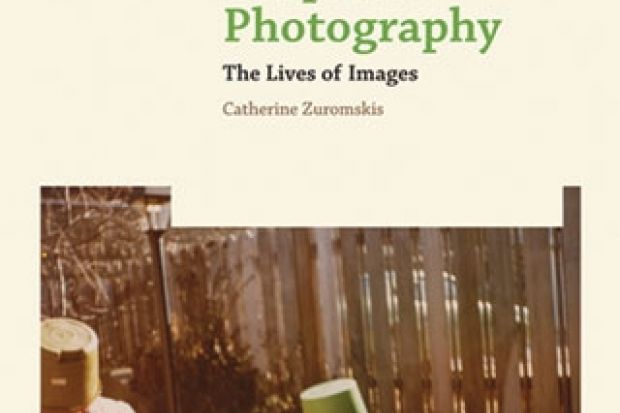Non-art photographs have been largely overlooked by art historians, argues Catherine Zuromskis. Readers guided by the title of this volume might expect to find substantial analysis of popular photographic practices therein – indeed, the subtitle suggests an anthropological approach to their understanding. It may come as some surprise, then, that Snapshot Photography is instead focused largely (and effectively) on amateur photographs as motifs – whether utilised as fictional devices in popular television and film representations, reframed as accidental masterpieces in Modernist art exhibitions or co-opted by artists as an aesthetic style.
Zuromskis’ flexible interpretation of snapshot photography – incorporating objects produced by point-and-shoot technologies and “the larger discourse that frames snapshot photography as a culture” – allows her to sidestep an examination of what people do with and say about their photographs to look at the meanings they have acquired in public culture. Snapshots are popularly understood as an innocent, immediate and authentic form (albeit one prescribed by aesthetic conventions and cultural rituals), Zuromskis’ case studies look at how these attributes can be re-interpreted in different contexts.
The first and most original of these is the “misappropriated or deviant snapshot”, as seen in TV crime shows and Hollywood thrillers. Zuromskis argues that the way the snapshot comes “preloaded with cultural symbolism”, such as the ideology of the happy family, make it “an effective mode of conveying both the domestic ideal and its degradation”. She follows this with an extended exploration of snapshot photography in American art museums. Her chosen blockbuster exhibitions cover some familiar territory; fresher is her scrutiny of lesser-known examples such as the Picturing What Matters 9/11 memorial show in Rochester, New York in 2002. This open-invite exhibition managed to capture – through what Zuromskis described as a “chaotic, absurd” display – some of the messy diversity of popular photographic practice. Thus, she argues, unlike careful curatorial selections made to show how snapshots could be welcomed into the canon of art, this exhibition “treated photographs as photographs”.
There were several points in this volume where I wished Zuromskis had done the same. The final third of the book focuses on Andy Warhol and Nan Goldin and the way that their work might be seen to intersect with snapshot photography. For Zuromskis, this meeting point takes place through the knowing use of amateurism as an “anti-style” and through the subversion of familial photographic conventions. But while both these artists utilised popular photographic forms, from the Polaroid camera to slide projectors, to provide a foil for their representation of New York bohemian underworlds, this part of Zuromskis’ book felt only tangentially connected to the study of what most people would recognise as snapshot practice.
For a book published in 2013, Snapshot Photography also pays surprisingly little attention to current digital transformations, from photography’s unprecedented proliferation to its new means of circulation and display. All the chosen case studies are a decade old or more. Of greater concern is the curiously ahistorical approach taken to its subject. The first chapter, for example, examines ways in which family albums are compiled, and is written in the present tense even though the practices it describes are largely outmoded. The final section, “Afterlife”, examines a little of snapshot photography’s changing identity but at eight pages is oddly brief (the section on Goldin, in comparison, is more than 60 pages long). Zuromskis writes well and her extended chapters allow her to linger over the fine detail of her selected examples and their interpretation. Her approach, however, means that the form of photography that she describes as “elusive and ubiquitous” continues to slip out of view.
Snapshot Photography: The Lives of Images
By Catherine Zuromskis
MIT Press, 264pp, £24.95
ISBN 9780262019293
Published 22 November 2013
Register to continue
Why register?
- Registration is free and only takes a moment
- Once registered, you can read 3 articles a month
- Sign up for our newsletter
Subscribe
Or subscribe for unlimited access to:
- Unlimited access to news, views, insights & reviews
- Digital editions
- Digital access to THE’s university and college rankings analysis
Already registered or a current subscriber? Login





